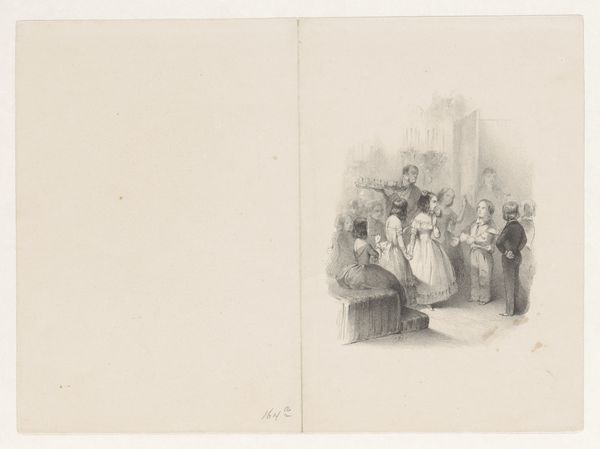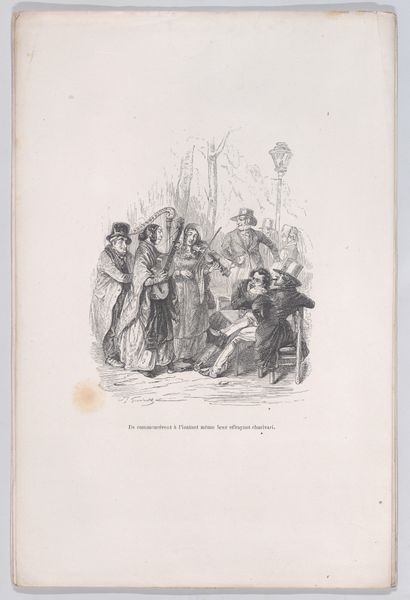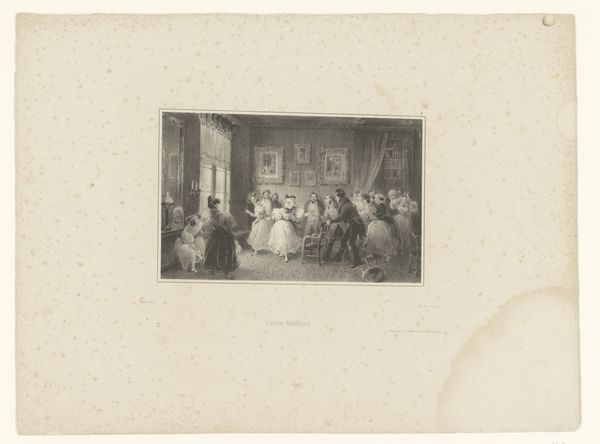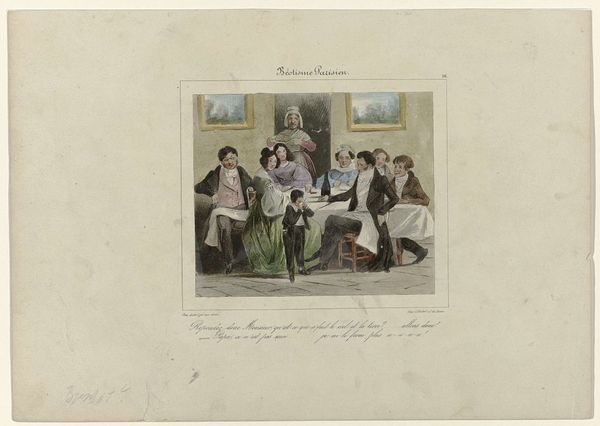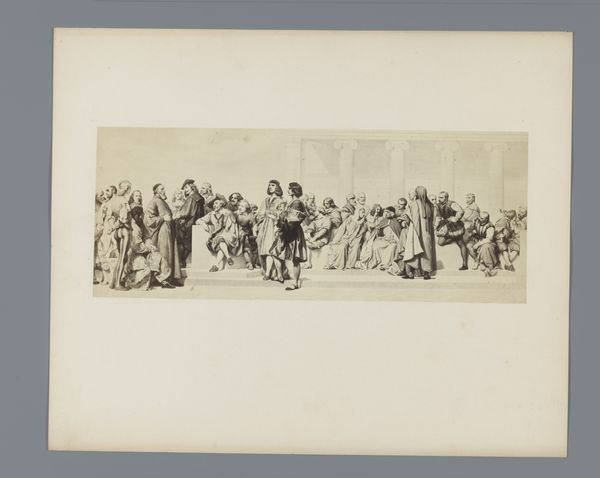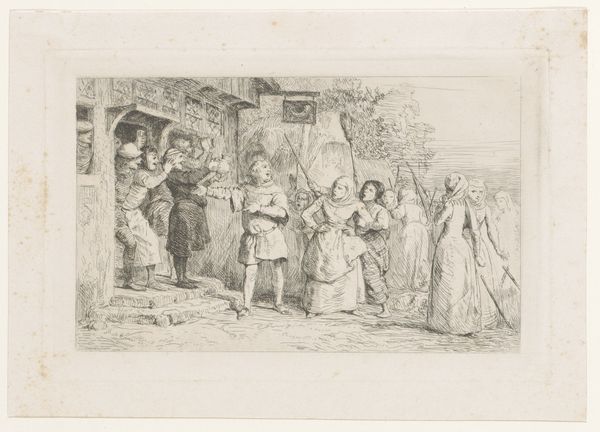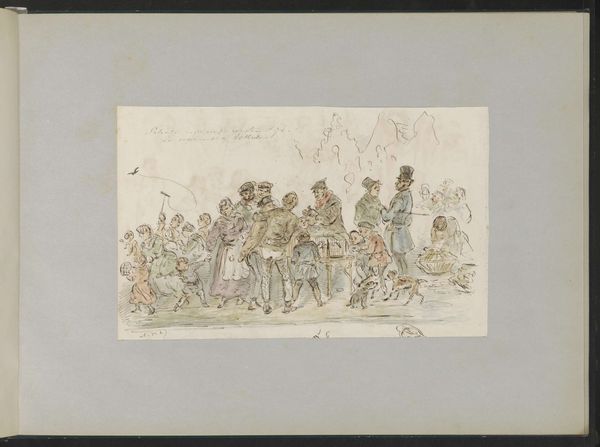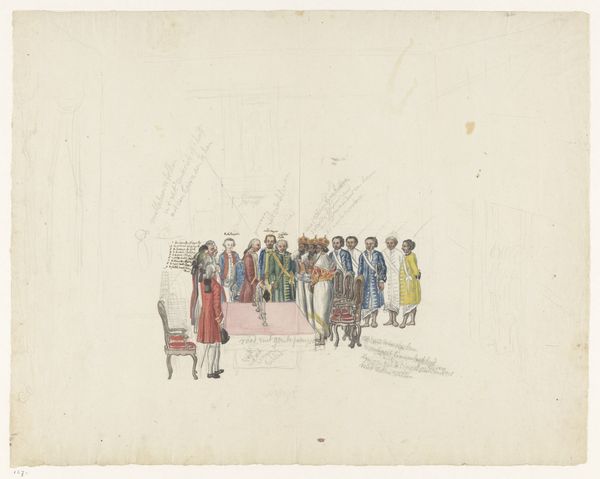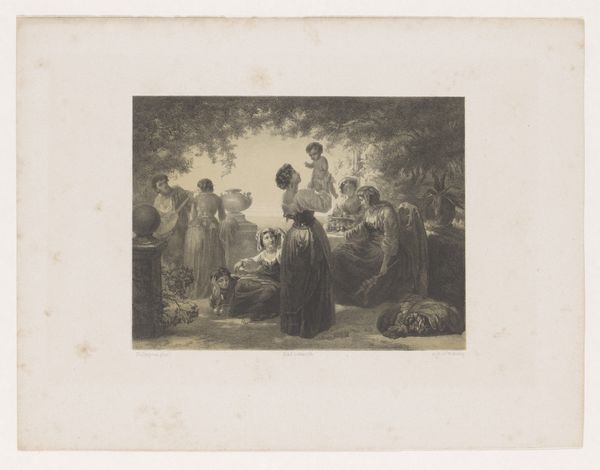
Dimensions: height 200 mm, width 294 mm
Copyright: Rijks Museum: Open Domain
Curator: Alexander Ver Huell’s “Koffiebijeenkomst in een interieur,” dating roughly between 1854 and 1887, depicts a coffee gathering. What do you make of it? Editor: At first glance, the watercolor sketch conveys a sense of warmth and gentle hustle—the soft colors giving it almost a dreamlike quality, while all figures are interacting. It seems quite a bit toned-down, almost made for intimate spaces. Curator: It certainly has a tranquil atmosphere, hasn't it? Genre painting was popular during that period, romanticising everyday scenes, a very distinct appeal. But, if we consider it under a materialist perspective, it can speak of new emerging values: not an overly ostentatious meeting as for other kind of parties, and accessible materials, reflecting broader consumption patterns. Editor: The choice of watercolor, so delicate and easily transportable, strikes me as telling. Were these gatherings a burgeoning form of social capital for the middle class, a space where status could be both performed and obscured? One also wonders about the toned paper – was it the artist seeking a shortcut or an economic solution for a commissioned, perhaps amateurish work? Curator: I think the tone adds depth and that intimacy again. These coffees in particular were very central, intimate almost, so it makes total sense that these kinds of intimate meetings were pictured using drawing rather than more grandiose and expensive materials such as oil painting. Editor: And how much artistic skill did that allow for at the time? Think of it—a rapidly expanding middle class eager to imitate aristocratic practices, demanding art at lower costs and lesser abilities. It surely affected artistic production. It might explain the limited detail of the clothes. We do see class display and all those new consumption opportunities; however, at least formally speaking, what's shown it is a kind of subtle depiction that may be misleading as such, do you agree? Curator: True. The fashion is indeed present, yet subtle for the time, a silent expression rather than in your face statement, as for nobility for instance. And as you put it, perhaps, given that is toned paper, maybe is not just a sketch, but we can think of this as the actual piece! The level of completion then, and the intimacy as a medium, it has an intended harmony, in my view. Editor: So the drawing is almost more honest that if an aristocratic meeting were pictured with this degree of "informal intimacy." This work's magic lies in those muted tones and transient material gestures. A gentle reminder that things aren't always what they seem and a hint on what artistic skill or status one could afford at a particular time. Curator: Yes! Absolutely—a material manifestation of social and artistic shifts. I love thinking about these historical details in this artwork.
Comments
No comments
Be the first to comment and join the conversation on the ultimate creative platform.
